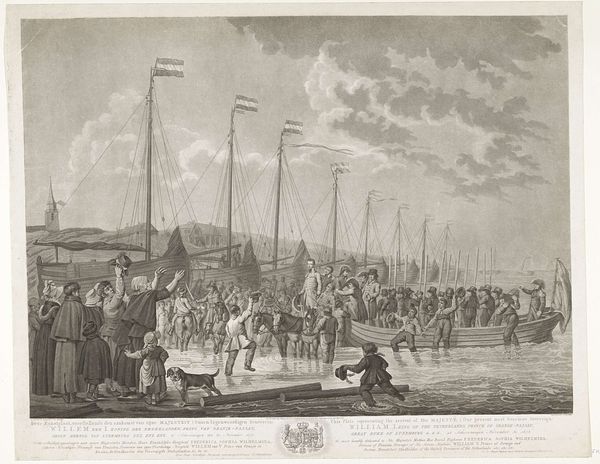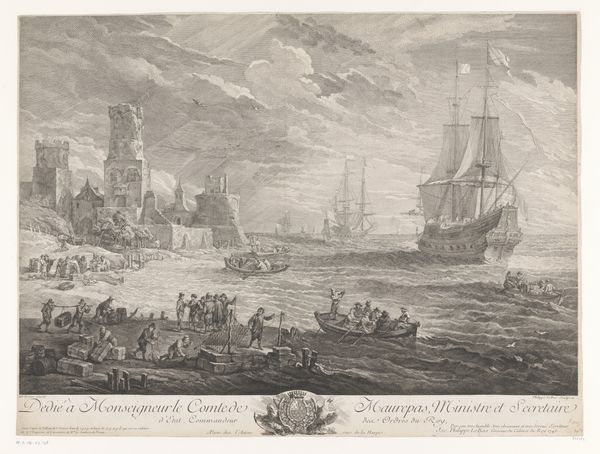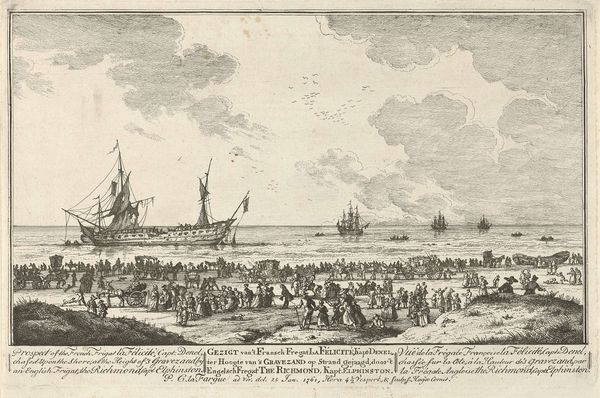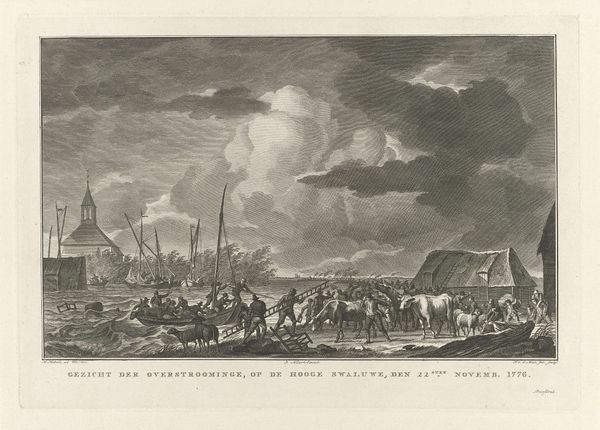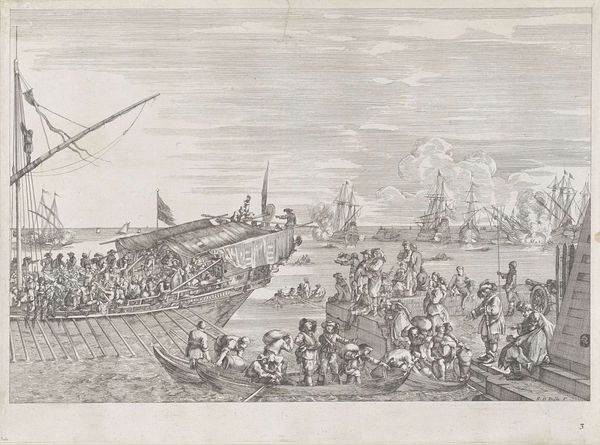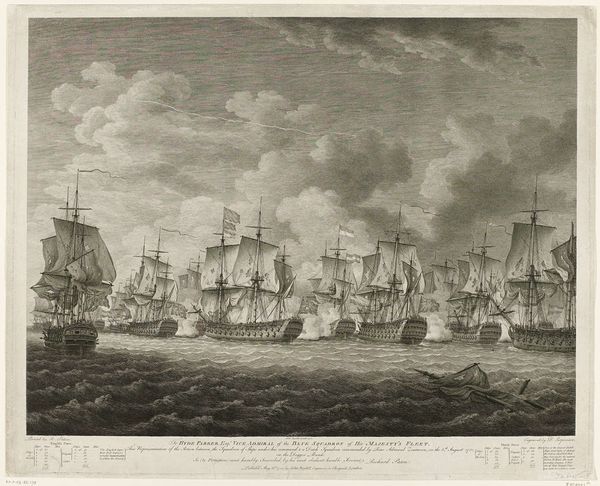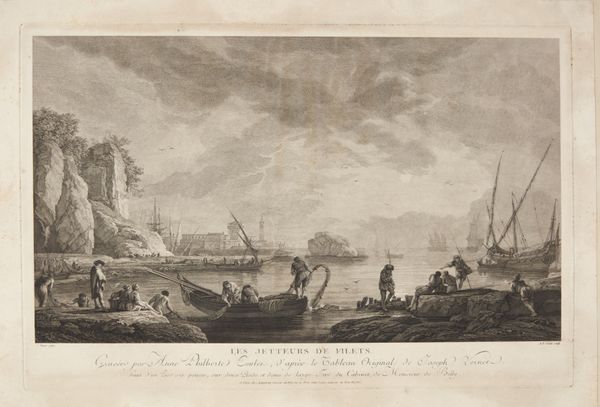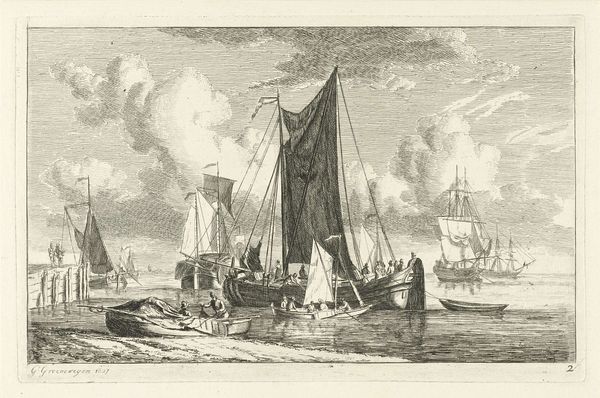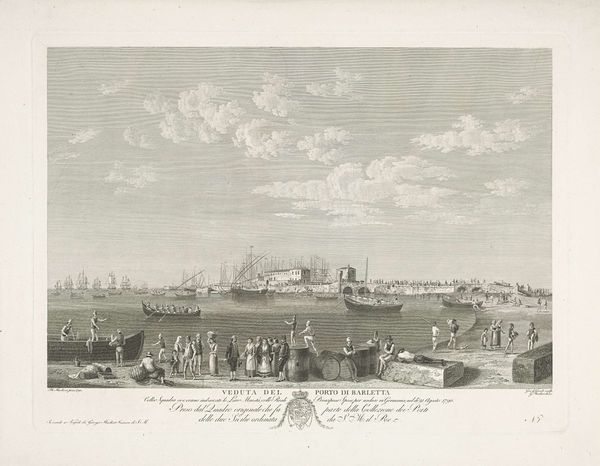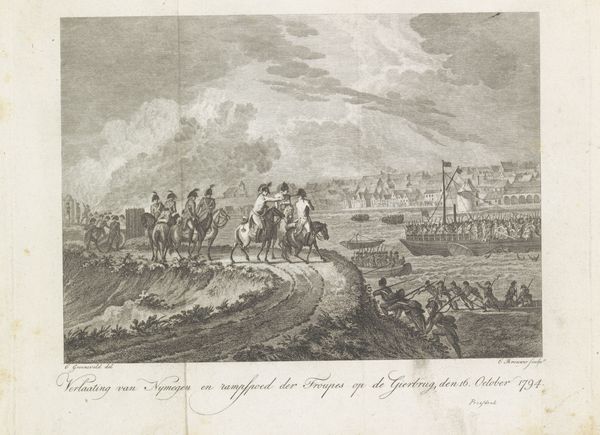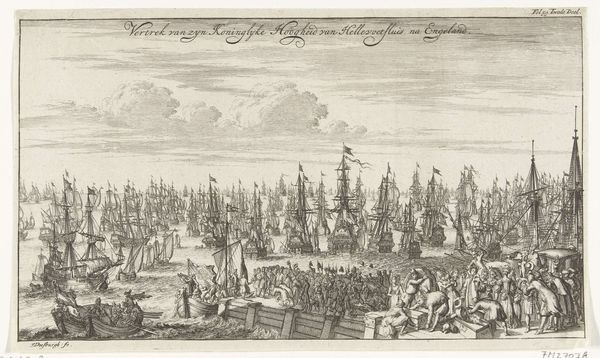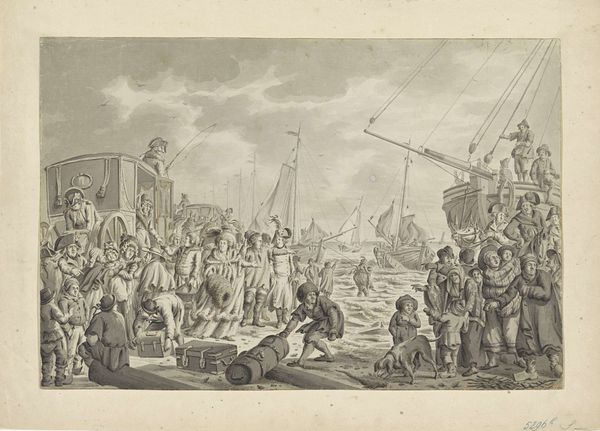
Aftocht van het Russische leger vanuit Den Helder, 1799 1799 - 1801
0:00
0:00
print, engraving
#
neoclacissism
#
narrative-art
# print
#
cityscape
#
history-painting
#
engraving
Dimensions: height 394 mm, width 515 mm
Copyright: Rijks Museum: Open Domain
Curator: At first glance, the symmetry of the image, balanced with the movement of figures towards the vessels, suggests an almost operatic choreography of departure. Editor: Indeed. What we see here, meticulously rendered by Pierre Adrien Le Beau between 1799 and 1801, is an engraving entitled "Aftocht van het Russische leger vanuit Den Helder, 1799," documenting the Russian army's withdrawal from Den Helder. Curator: The meticulous detailing typical of engravings, and consistent with neoclassicism. Note the linear precision and almost stark clarity. The use of perspective cleverly contrasts the compact groups of figures against the towering architecture and naval vessels. Editor: Le Beau captures not merely the act of leaving, but the culmination of political machinations. This departure marked a significant moment during the Batavian Republic. Curator: From a purely compositional standpoint, it is the contrast of the fortress against the water, of static line against suggested movement, that imbues the print with such a quiet yet resonant energy. See the textural variation achieved through mere line work. Editor: Quite so. And it’s important to remember that Le Beau, though Dutch, often worked within the circles of French influence; neoclassical principles emphasizing order and reason suited the era's ambition to document and idealize moments in governance. The neat lines of marching soldiers, and ships imply military structure and order as the Russians evacuate the Netherlands. Curator: Even the waves seem formalized! There’s a calculated visual rhythm throughout the piece, reflecting the neoclassical devotion to harmonious arrangements. Editor: And behind the beauty, lies a complex history, fraught with shifting alliances, political calculations, and human consequence – the Russian withdrawal impacting the entire region's geopolitical situation. Curator: So, we have an image serving dual purposes: documenting an event and acting as a study of compositional principles. The artist's focus seems decidedly directed to the linear precision in depicting spatial relations. Editor: By considering Le Beau's artwork within its history, the politics of imagery in Neoclassical art can be seen, creating powerful narratives from historical events. Curator: Reflecting on its construction I'm taken by the delicate balance, a harmony created out of a moment filled with inherent conflict. Editor: I agree. By looking into what shapes historical images, we come closer to comprehending the motives of those in power.
Comments
No comments
Be the first to comment and join the conversation on the ultimate creative platform.
